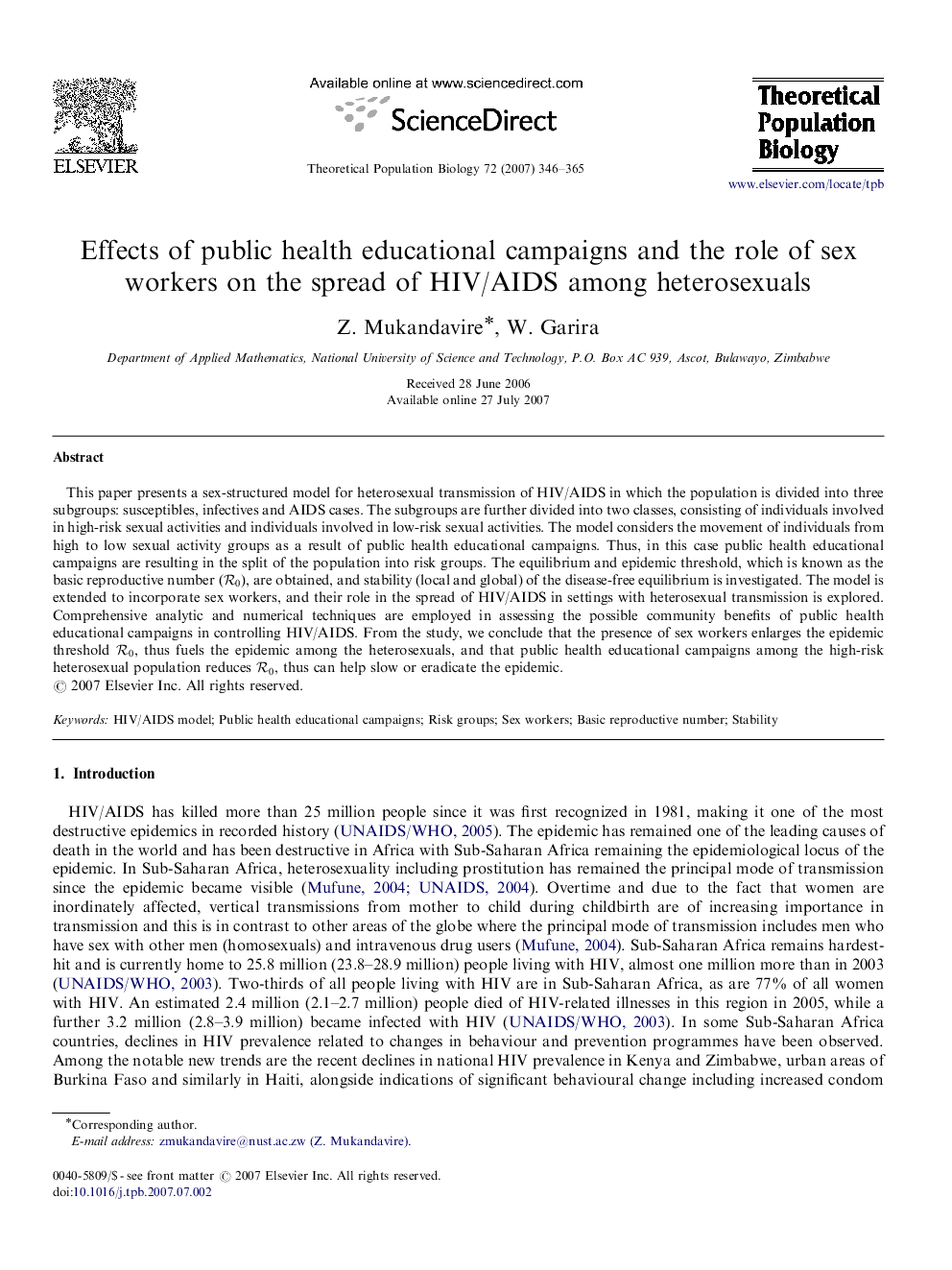| Article ID | Journal | Published Year | Pages | File Type |
|---|---|---|---|---|
| 4502906 | Theoretical Population Biology | 2007 | 20 Pages |
This paper presents a sex-structured model for heterosexual transmission of HIV/AIDS in which the population is divided into three subgroups: susceptibles, infectives and AIDS cases. The subgroups are further divided into two classes, consisting of individuals involved in high-risk sexual activities and individuals involved in low-risk sexual activities. The model considers the movement of individuals from high to low sexual activity groups as a result of public health educational campaigns. Thus, in this case public health educational campaigns are resulting in the split of the population into risk groups. The equilibrium and epidemic threshold, which is known as the basic reproductive number (R0)(R0), are obtained, and stability (local and global) of the disease-free equilibrium is investigated. The model is extended to incorporate sex workers, and their role in the spread of HIV/AIDS in settings with heterosexual transmission is explored. Comprehensive analytic and numerical techniques are employed in assessing the possible community benefits of public health educational campaigns in controlling HIV/AIDS. From the study, we conclude that the presence of sex workers enlarges the epidemic threshold R0R0, thus fuels the epidemic among the heterosexuals, and that public health educational campaigns among the high-risk heterosexual population reduces R0R0, thus can help slow or eradicate the epidemic.
